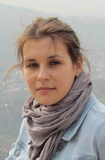BibTeX
@inproceedings{Li_ICLR25,
TITLE = {{VSTAR}: Generative Temporal Nursing for Longer Dynamic Video Synthesis},
AUTHOR = {Li, Yumeng and Beluch, William and Keuper, Margret and Zhang, Dan and Khoreva, Anna},
LANGUAGE = {eng},
PUBLISHER = {OpenReview.net},
YEAR = {2025},
MARGINALMARK = {$\bullet$},
BOOKTITLE = {The Thirteenth International Conference on Learning Representations (ICLR 2025)},
ADDRESS = {Singapore},
}
